Humor in English
Break Room Pragmatics
Practical Ideas & Resources
Resources in this section curated by: Maggie Mitteis
Break Room Expectations
This nuance description of items in the break room explains both why those spaces are unique and also why the items found in this space are important. In examining these items, learners can also understand what is both normalized in this space and how one can successfully interact within it.

Micro-Managing

This image introduces the phrase "micro-managing." It also further connects the phrase to the break room context and expectations that can be placed on that space, but not accepted by everyone.
Breaking the Rules

Here we see an individual who has stepped outside of break room norms. The way that he has chosen to utilize the space demonstrates that there is a distinct code of conduct for the space, even if it is unsaid.
A Break Room's Purpose

This image is intended to facilitate a conversation around the expectation in a shared space. Specifically, this image demonstrates that not everyone agrees on those expectations--they are something that are both location and culturally specific and collectively agreed upon.
Food & Stockpiling
In this clip, we see a large overstepping of break room expectations surrounding food. Dwight's stockpile of food clearly makes his officemates uncomfortable. Each person displays their discomfort in an indirect form, each wanting him to cease the stockpiling, but not saying so directly.
Acceptable and Unacceptable Behaviors
Birthday Parties

Attending work-place birthday parties is a necessary part of integrating into office culture. Here, learners can observe a colleague stating clearly why he does not enjoy these events. In this interaction he both chooses not to attend and alters his relationship with his coworker and possibly other further cake-related events.
Severity of Office Interactions

This comic demonstrates the severity of office interactions. It clearly demonstrates that there are occurrences in which coworkers use the break room as a place to "take a break" from their colleagues.
Consequences of Violating Office Norms
Though very heightened in presentation, the saga of Ross' sandwich demonstrates the consequences of violating office norms and accepted rules regarding the community refrigerator.
Possible lesson ideas: Ask students to write a note that will protect Ross' sandwich.
Creating Unity
Just as pragmatic norms can create division, this clip shows how they can create unity. In this show, an office group attempts to renegotiate norms around available snacks and the turn taking/shutting out of another colleague that follows.
Who Stole Joe's Gelato?
Here we see an example of violated norms in utilizing a shared office refrigerator. Though this is a heightened scenario, the clip offers students a glimpse into how relationships can be both created and violated in how the break room space and items stored there are managed.
Signs & Symbols Found in a Break Room
Expectations - Imperatives

This sign conveys the expectations of the space and how to keep order among colleagues. It's very straightforward in its expectations for maintaining the status quo. It can be used as a tool for teaching imperatives.
These "dos" and "don't" clearly assert what is acceptable microwave usage. In order to build and maintain good relationships in the break room space, microwave users can follow these steps.

Refrigerator Usage

This presentation of a break room rule and refrigerator usage is more aggressive than the previous signs. The presented consequences of violating accepted rules are much stronger. If one fails to follow the stated rules, one will quite literally lose one's lunch.
The Dirty Microwave
In this scene of “The Office”, Pam is upset that someone in the office has made a mess in the microwave and will not clean it up. A workplace microwave (or refrigerator, for that matter) doesn’t “belong” to anyone. If you find a microwave in a home is coated inside with food splatters, you’d think, “Ewww! He’s really a slob!” But the work microwave doesn’t reflect on any one person. Some people count on others having a lower tolerance for a mess than they do.
An Individualistic Approach
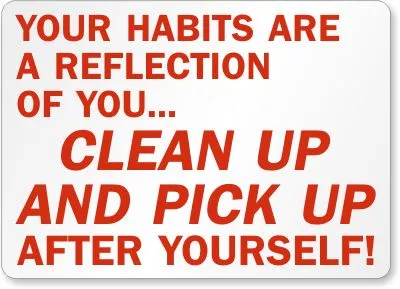
This sign shows a more aggressive and individualistic approach to break room discourse. Here an individual's actions in a shared space characterize the individual, not the collective. This also creates a space where each person is responsible for themselves, rather than the habits of others.
Expectations & Humor

This sign depicts a more humorous look at expectations. Attributing dirty dishes in the sink to harming kittens appeals to the break room users' empathy, especially those self-identifying as a "nice person."
Double meaning of “Date”

Even though they are necessary, abiding by office norms can feel silly. This note seeks to mock the expectation that all items be "dated”, as “to date” can mean multiple things, such as “to put the date on something” or “to go out with”.
Not to Touch

Here, the collective is pushing back on the expectations of one individual. By adding another sign below the original requesting not sharing one mug, the group might be asserting that the first request is outside the shared norms and expectations, or they might be joking about the literal meaning of the word “touch".
Break Room Small Talk
Small talk often involves many safe, very surface topics. This image provides a humorous representation of which topics are safe and how these topics can be rotated in ordinary conversation.

The Weather

Discussing the weather is both a neutral topic of conversation and an expected form of "safe" conversation that can occur in a shared break room space. Learners can analyze this image and discuss if understanding the weather or filling the silence is more important.
Commuting

"Safe" topics for small talk--especially with people who you do not know well--include commuting. This image demonstrates how to engage with a colleague while waiting and that it is both accepted and expected for the conversation to remain at a surface level.
Can you believe that guy?

"Can you believe that guy" is a phrase that can be utilized in both a positive or a negative connotation to comment on another's behavior.
testing test
Digital Games in English
PRACTICAL IDEAS & RESOURCES
Resources in this section curated by: Cameron Teubner-Keller

Dead by Daylight Discussion | Discord Chat

This photo is from an online public discord server for the community that plays the game Dead by Daylight. The server allows for general chatting between members and constantly shows pragmatic strategies being used. Whether it’s slang, responding, humor, or other pragmatic features of language, it’s extensive in the general chat. General chats give opportunities for learners to observe, analyze, and extend pragmatic knowledge. Since the server is public, anyone from any community can join, leading to intercultural communication.

Funny interaction with a player after a game | Reddit Post
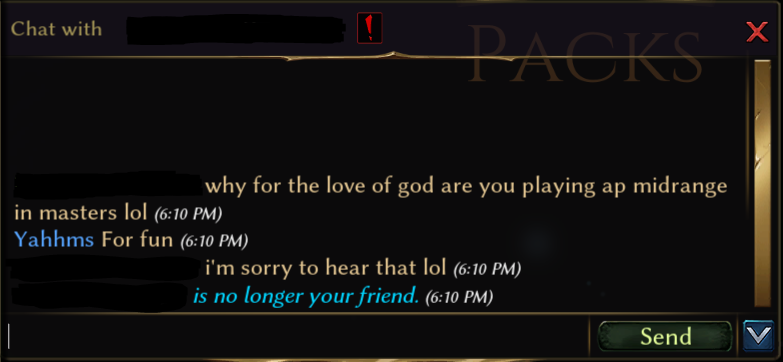
This post shows an interaction between players in a game-chat. One of the players uses “lol” to make his critique of another player sound more light-hearted. The following comments on the reddit post discuss the use of “lol” and other possible ways to do the same thing. One person suggests using “lmao” to really make it seem like you’re not salty when you are. Reddit posts like this are great for learners to observe and discuss pragmatic examples in the gaming context.

Why “No Problem” Can Seem Rude: Phatic Expressions | Reddit Post
This post on the r/RocketLeague subreddit showcases the phatic expressions and humor/sarcasm present in the online multiplayer game Rocket League. In this game, players use "quick chats" (pre-written short messages) to communicate with teammates and enemies. One of these chats is the 'no problem!' quick chat, which is used to maintain a positive mental (term for having a strong mental strength and not getting overly frustrated) between teammates when something bad happens. However, some players use it sarcastically when someone does something bad for humor. Through this game, players can learn about sarcasm and how to use simple phatic expressions.

Rocket League: 20 Unspoken Rules Every Beginner Should Know | Article
These "unspoken rules" of Rocket League are actually pragmatic knowledge for the digital game. Some of these rules have to do with quick chats, others have to do with different game-play strategies that should or should not be used. Following these rules is essential for avoiding miscommunication and having positive interactions with other players during game play, just as having pragmatic knowledge about a target language can help avoid miscommunication with expert speakers.

Apex Legends From Start To Finish - Real English for Gamers | Article
This article discusses how Apex Legends could be a good game for learners of English to practice language skills, as it requires consistent communication with teammates. The article is unique however, as it covers different stages of gameplay and uses popular video clips to explain relevant terminology, phrases, and language functions necessary for communication. This allows learners to have visual and auditory input and observation before analyzing and extending the knowledge they've observed.

Pragmatic Skills Series: Apps that promote social skills! | Blog Post
This website/blog for speech-language pathologists includes a list of apps/games that are used in therapy rooms for teaching pragmatic skills. The blog post prices of each and the skills they assist learners with. These apps could be helpful for learners as self-study tools or for teachers, especially with younger learners.
Greetings in English (with a focus on Chinese EFL)
PRACTICAL IDEAS AND RESOURCES
Resources in this section curated by: Elaine Sun, Lily Li

Greeting Chart: Informal to Formal | Image

This chart demonstrates the greeting from informal to formal with a column arrow. “What’s up?” and “Hey” are the most informal phrases to greet someone you know. “How are you doing?” and “Hello” is the most formal phrases to greet someone you do not know well or in the work setting. This chart is useful for students since it has a clear arrow to demonstrate its informality and formality in greeting.
The activity will be created by putting each picture (different greeting situations) in each ppt slide. In each slide, I will let students raise their hands to answer the phrase given below. I will make this chart as a handout for students to see as a reference. This chart is related to our topic since it has greeting phrases ranging from informal to formal, pictures of the greeting situations besides the greeting phrases and it has some greeting phrases other than, “Hello, how are you?”

“I’m Fine” (Outside and Inside) | Meme

“I’m fine.” is commonly answered by people when it comes to greeting. However, when people answer “I’m fine”, it does not necessarily mean that they are fine or good although often it means they are good or fine. Therefore, when someone says “I’m fine”, people, especially loved ones will ask follow-up questions like “Is everything alright?”
I will show this meme to the students 5 minutes before the end of the class during the first day. This is a meme that I would like to show to the students to make them laugh. Since many students will probably not get it without the explicit explanation, I will first explain the culture of answering I’m fine.'' in English speaking countries. Answering “I’m fine” most of the time indicates that this person is just fine or good. However, sometimes, perhaps a lot of times people will answer it just to lie that they are doing well, but in reality, they are not. After the explicit explanation, I will let students see this meme again and hopefully, they will get it. This meme relates to our topic since it relates to the “How are you?” greeting lesson, “I’m fine” is the most common greeting response and it lets students learn that not every greeting is 100% true.

Cultural Differences in Etiquette | Image

This picture shows the difference in greeting gestures between Asian and western people in a formal situation. Greeting cultures are different in different countries. It would be proper to shake hands with people in China, but bowing might be more appropriate for western people.
The teacher could give the discussion topic of “Have you ever experienced awkward greeting gesture conflicts like the situation in this picture? What are they?” Students will get into groups to have discussion on this topic based on this picture. Students could demonstrate some gesture conflicts after the discussion.

Toy Story – Greetings | Meme

This is a meme about greetings. People might feel frustrated when they need to greet many people but don’t know how to greet in the most appropriate way. Especially for ESL students. When they are beginners of a foreign culture, it will be challenging for them to greet others in that culture with the target language.
This is just a piece of interesting meme and it could be shown by the beginning of the class. Some students might panic when greeting people in their second language and actually, they are going to learn many different ways of greeting. This meme tells that greeting is everywhere and some people, even native speakers, might have the same feelings as they do.

5 Way to Say Hello: Common English Greetings | YouTube Video
This video teaches people five ways to greet English speakers: hello in person, hello on the phone, good morning or good afternoon, hi/hey/how’s it going? and hey, what’s up? It teaches people not only how to greet formally and informally, but also teaches that greeting is not only limited to “hello” or “hi”. This video gives students a warm-up on how to greet people.
This video can be used on the first day of class to introduce what the most common greetings in English is like. I will show this video after I introduce what greeting is to the students in my own words. After watching this video, students will walk around the classroom and greet their classmates with the phrases they learn from the video. This video relates to our topic because it covers the basic greeting lesson, the greeting phrases that can also be used in the college and it lets students learn how English speakers greet.

Informal & Professional English Greetings for Every Situation | Blog Post
This article talks about formal, informal, and greeting slang in English. For each topic, it has detailed discrimination about it and some taboos of greetings under this situation. The most helpful part of this article is that students will be able to have the example conversation to understand the discriminations, and to practice with peers. Also, the article labeled additional resources for audiences to explore more by themselves. It’s a really good article for students to learn the greeting and taboos.

Casual Greetings and Friendly Body Language | Blog Post
This article is talking about the gestures that people normally use in greetings. From the movie, learners always see people doing different gestures with friends when they are doing greetings. However, learners could find the explanation of gestures and how it works in daily life. This article clearly talks about the gestures in greeting with different people and under different situations. This article could give learners ideas of what they can do with gestures when greeting.

Greeting Body Language | Article
This article is about greeting gestures in world culture. Generally, gestures include hand-shaking, salute, bowing, waving, hugging, kissing, etc. For some cultures, it has some specific greeting rules so learners should have awareness of it. Although these are not included in North American culture, it is better to have the knowledge in mind for learners to prepare their greeting in later life.

English Greetings | Article and Activity
The article has clear guidance of greeting in several steps from different aspects. In this article, the highlighted part for learners is the Introduction to other people. Normally, the textbook or teachers always talk about greeting one on one and merely talking about group greetings. However, in real life, we always have situations of introducing other people, and this is a common social event in school life. Also, the cultural tip part is interesting. It mentions that “It’s polite to address them as Mr / Ms until the situation becomes more informal. “This is totally different from learners’ own cultural background. So students will be able to have this knowledge and bring it to the class to talk about it.

Learn English - Greetings in English, how to Answer the Question "How are you?" | YouTube Video
This video introduces people on how to answer the question “How are you?” Oftentimes, people answered, “I’m fine, thank you.” However, this video teaches us how to answer it other than “I’m fine, thank you.” People can also say “Pretty good!” or “I’m fine”, if people do not feel good, they can say “Not so well.” When people are learning English as a foreign language, they often find it difficult to answer the sentence “How are you?” properly. Therefore, this video is useful for students to watch and include it as part of the instruction.
On the first day of class, I will use this video to teach students how to answer “How are you?”. I will show this video at the beginning of the class. After watching this video, students will walk around the classroom and ask “How are you?” and they will have to answer the phrases they learned from the video. This video relates to our topic because it covers the basic greeting lesson, the greeting phrases that can also be used in the college and it lets students learn how English speakers answer “How are you?” other than “I am fine, thank you and you?”

P!nk - What's Up | YouTube Video
This song expresses her frustration about her life and keeps repeating what’s going on. When people ask “What’s going on?” it often means that they see someone is unhappy and want to make sure if they are ok by asking that phrase. This phrase is being asked a lot, so therefore this is a good song to teach students how to use the phrase “What’s going on?” in greeting.
This music video enables students to remember the “What’s going on?” greeting phrase since the song repeats it a lot. People will greet “What’s going on?” when someone replies that he is not so good. The song enables students to have interests in learning new things. This song relates to our top since it covers one of the greeting phrases “What’s going on?”, a greeting phrase that a college student can use to ask related to the difficulties during the college, and the lyrics inside related to students’ life as well.
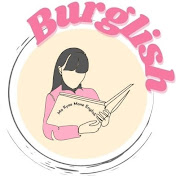
American Slang- What's Up? Greeting Slang | YouTube Video
This video teaches some English greeting slangs outside of the English textbook. For example: “What up?”, “Hey girl, what’s up?”, “Chillin, nothing much.”, “What’s up with you etc.” Even though the English textbook covers as many greeting materials as possible to prepare students to greet in a real unexpected situation, sometimes knowing every single greeting in the English textbook is not enough. Therefore, this video is useful for students to watch to learn English greeting slang.
In the later lesson, I will use this video to teach students that greeting is not only limited to “Hello, how are you?” and “I am fine, thank you.” Even though this greeting is grammatically correct and is a correct way to greet, nowadays many English speakers do not greet their friends that way. This video is related to our topic since “What up?”, “Hey girl, what’s up?”, “Chillin, nothing much.”, “What’s up with you etc.” are also a part of casual greetings. Moreover, it is related to our topic since this can be a greeting lesson outside of our textbook. Lastly, this is how many Americans greet their friends.

5 Common Gestures in North American Communication | YouTube Video
This video teaches the five common non-verbal greetings. For example, head nodding represents “Hey, What’s Up?” There may not be a lot of differences in non-verbal greeting between the US and another country. Still, certain non-verbal greetings are often used in the US. Therefore, it is important to let the students know the non-verbal greeting through this video.
I will show this video to the students until 1:25 because after 1:25 the content is not related to the greeting. After this video, I will go around the classroom and greet the students non-verbally and they will greet me non-verbally back. The video before 1:25 is related to our topic since it teaches us the non-verbal way of greeting someone, it demonstrates the examples in greeting non-verbally and teaches how the culture in greeting nonverbally is like in North America.

ALI American Culture Series: How to Greet Someone (Formally)? | YouTube Video
This video demonstrates the good and bad example of a student greeting the professor formally in the university class. The bad example shows that the student greets the professor by saying “What’s up?” with the high-five whereas the good example shows that the student greets the professor by introducing herself and shaking the professor’s hand. This video is useful especially to college freshmen since this gives them the idea how to greet the professor properly.
When the lesson is deeply related to how to greet the professor or even the advisor, I will show this video, but after I explain the importance of greeting appropriately with the university professor and the advisor. This video relates to our topic since it covers the formal greeting with the university professor and the advisor, compare and contrast between the informal and formal greeting and compare and contrast between the inappropriate and the appropriate greeting with the university professor and the advisor.
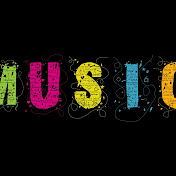
You Had me From Hello - Kenny Chesney | YouTube Video
This is a song from Kenny Chesney and it’s published in 1999. This is a song Kenny wrote for his wife, Jerry Maguire. The main point of this song is that the “hello” from Jerry gave them a chance to get to know each other and finally, they are connected together”. Greetings have such power to connect people.
This song could give a view of how greetings could connect people together. This song could be played when the topic goes to “functions and importances of greeting”. This is a nice song and it encourages people to be brave to say hello to others.

Good to See You | YouTube Video
This song is from Neil Young, published in 2000, included in the album “Silver & Gold”. The lyrics are simple, but involve certain phrases of greeting which is “Good to see you. Good to see you again. Good to see your face again”.
Students could learn these three phrases and they could use them when they are greeting with their friends, classmates, and colleagues who they have not meet for a while.

Lionel calls Adele to say Hello | YouTube Video
This is a video published by BlendTV on Youtube (Oct 23, 2015). It is a mixed-cut video that involves two MVs. One is “Hello” by Lionel Richie (1983). Another is “Hello” by Adele (2015). The video shows that Lionel calls Adele to say hello, but Adele doesn’t want to talk to Lionel and puts down her phone.
This video could be played during the breaktime. It is a funny video but gives a brief demonstration of inappropriate greeting through a phone call. Though the video involves only a few sentences and it does not have a good ending, it still gives an example of greeting through a phone call.

Formal and informal greetings | YouTube Video
This video is published by Joy Blake on Youtube (Apr 20, 2017). This video shows two scenarios of greeting. One is a formal business situation and one is an informal situation between friends. The differences between greeting different people are clearly demonstrated. It gives students a visual idea on how to greet appropriately in such situations.

The Best Handshakes Ever | YouTube Video
This video is published by Nico Carlson on Youtube (Jun 3, 2017). It shows many creative handshakes that Nico and his friends made. Handshake is part of greeting. Creating unique handshakes could help improve relationships and build strong connections between people. Special handshakes are also being treated as “the proof of friendship/groupship”.
The teacher could arrange an in-class activity. Students will get into pairs and design their own handshakes. Once all of them have done the design, each group will demonstrate their handshakes and explain they will have this handshake with whom.

How To Avoid Awkward Greetings - Socially Awkward Situations | YouTube Video
This is a video published by BBC Brit on Youtube (May 20, 2016). It talks about how to avoid awkward situations when people are greeting each other. It gives 3 possible options to do greeting appropriately with others and the scenarios involve a sense of humor. The video is easy for students to understand.
Based on the video, students will discuss some awkward situations that happen during greeting. Also, they will give some possible solutions for those situations. After the discussion, each group will present their results and give opinions to other groups’ solutions.

awkward | YouTube Video
This video is published by Adam Tambakau on Youtube (Jul 9, 2012). He gives some examples of awkward situations that happen a lot during greetings. Though he doesn’t give suggestions or solutions for those situations, it is a good chance to learn something that might be awkward and students can try their best to find out some possible solutions for those situations.
Since the solutions are not given in the video, students could work in groups to find out some solutions for those scenarios. Each group will present their solutions by the end of the discussion and simply explain their reasons.

Stop Saying "I'm Fine" - Ways to Respond to "Hello, how are you?" | YouTube Video
This video is published by Learn English with Papa Teach Me on Youtube (Mar 9, 2019). The speaker in this video demonstrates many ways of greeting verbally, including how to ask greeting questions, what phrases to use, how to answer the greeting in different ways and different situations, etc. He also explains why we could do or could not do such things. This video is a good one for ESL learners to learn how to greet more like native people do.
Many examples of greeting phrases are listed in this video. Students could do role plays by using some of the phrases. The teacher could give some scenarios to students. Students will choose appropriate phrases to use depending on the situations.

AmoLink - eCards Creator | Website
Social media makes connections among people more and more convenient, people can send a message or online greeting cards on social networks in various festivals or holidays instead of sending paper cards. Once a staple, paper greeting cards are fewer and farther, now seen as something special, instead of something required. Electronic greeting cards have become more and more popular in recent years. This website is a tool for people to create electrical greeting cards. Students could use this website to create greeting cards and learn languages.

Greeting on Facebook | Website
Essentially, the social network is now adding a bunch of variations to the ‘Hello’ greeting it quietly introduced for users. In addition to saying ‘Hello’, you can now send a hug, wink, poke or high-five. These options become available when you hold the ‘Hello’ button, similar to how the additional Reactions work with the Like button. This is a good resource for students to practice greeting online with native speakers.

Greeting hashtag on Instagram | Website
Students will explore #greeting hashtag on Instagram and see how people greeting on social media. It also shows different ways of greeting in different cultures. Students could post their own greeting post and add the #greeting hashtag. Social media greetings could be different from people greeting in the real world. Because of the distance, Instagram could be a useful resource for students to learn greetings online.
Humor in English
PRACTICAL IDEAS AND RESOURCES
Resources in this section curated by: Johanna Lyon, Cathy Lee, Tung Tuaynak, Jermayne Tuckta, and Ken Ezaki Ronquillo

How to Tell a Joke | Article
This step-by-step article walks readers through the important components of telling a joke in English. It provides tips on how to keep content centered and focused as well as executing the material with proper delivery. This can depend on the audience, type of joke, and setting. The twelve steps of this article provide information on a variety of scenarios that may occur and how to follow the different paths of telling a successful joke. While this article does not explicitly mention pragmatics, what it is instructing its readers on is entirely pragmatics. It covers all quadrants of the IPIC model allowing for people who enact the information explicitly taught within the article to have felicitous interactions with others.

9 Kinds Of Humor Explained In English | Article
This resource describes 9 different types of humor found in English-speaking cultures. This ranges from everything from slapstick humor to self-deprecating humor to absurd humor. This resource would be valuable for teachers looking to give an overview of English humor to their students. It covers the many forms of humor without being overly prescriptive and allows for students to meld their own country's humor with the humor typically found in English. Ultimately, this article does much of the same work as scholarly articles about English humor; however, this one is much more approachable and easier for students and teachers to jump right into without much foresight.
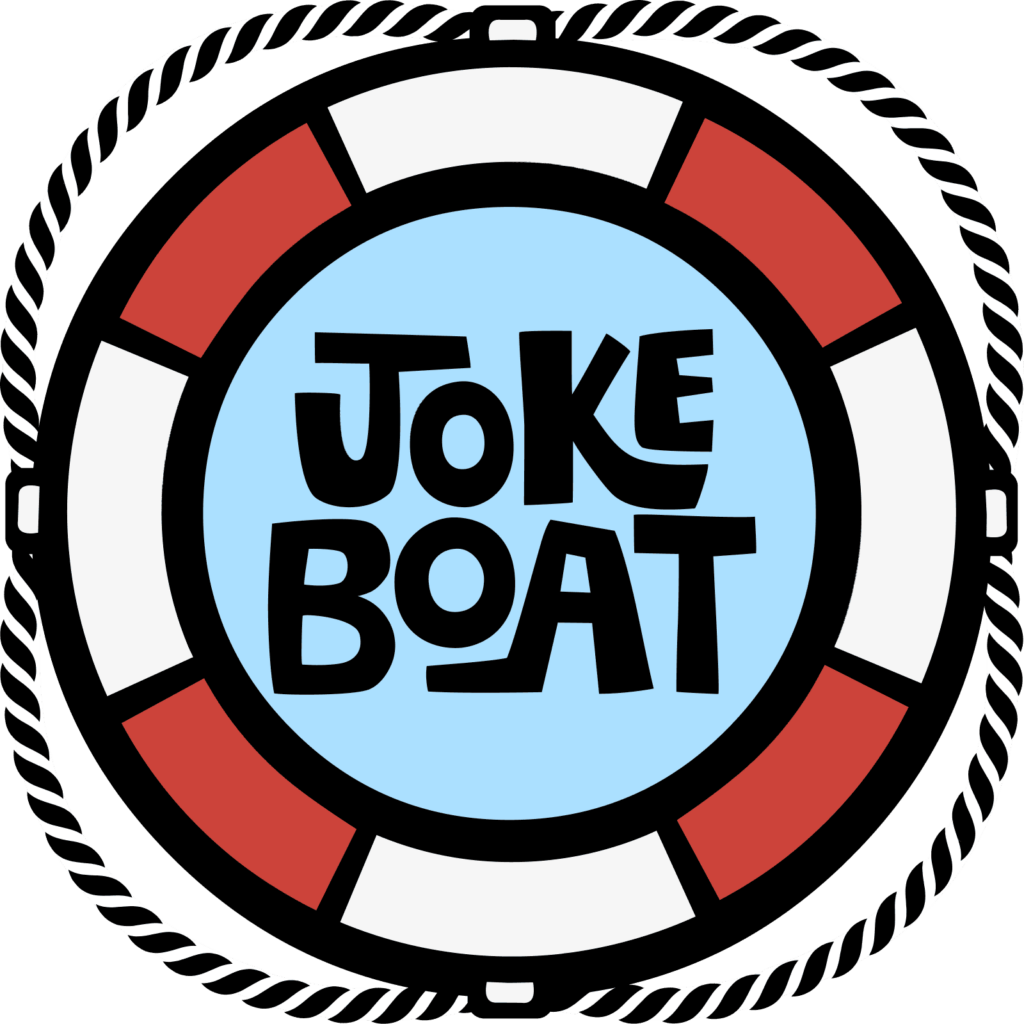
Joke Boat | Online Game
This game created by Jackbox Party Pack simulates a stand-up comedy experience where participants can create their own standup comedy jokes. First, the game shows examples of humor that are appropriate for that type of game. Then players take turns making jokes and submit them to the game to be displayed. After each joke is displayed, the other players vote on which are the funniest jokes. This resource would be excellent to apply in a classroom because it allows students to practice making jokes and using the pragmatic knowledge that they learned in instruction. Then, there is a clear perlocutionary force in the reaction and voting from other players, so you can clearly see which jokes were successful and which ones were not. This resource could be employed in small groups in a classroom or using the audience function where only some students write jokes and the rest participate only in the voting process. Then students could take turns on who is writing the jokes.

It Is Wednesday My Dudes Vine | YouTube Video
This Vine generates humor through the unexpected in several ways. The first of these is the absurdity of the outfit that the man in the video is wearing. While one may anticipate a funny outfit on a person making a Vine, the goggles that he is wearing and how tightly they are affixed to his head adds another level of absurdity and unexpectedness beyond the usual. Then the way the man marks his language by saying “It is Wednesday” instead of “It’s Wednesday” creates a degree of formality that further does not gel with the image that the viewers are seeing. Finally, the yell at the end is extended which is fully unexpected to the learner. This unexpected continuation leads to a humorous response from the interlocutors. This video could be used within an English pragmatics classroom as it demonstrates modern humor in American English that capitalizes on cringe, unexpectedness, and ridiculousness.

Mad Libs | Game
MadLibs provide both an opportunity for students to practice being funny in English but also a clear example of several types of popular humor in the language. Absurdity and clever plays-on-words are popular forms of humor that are showcased in MadLibs and that students can practice while playing the popular fill-in-the-blank game. MadLibs are also easy to implement in the classroom and take little preparation to teach. Therefore, teachers looking to implement humor education in their English-language classrooms could easily use MadLibs in their classrooms to get students to practice.
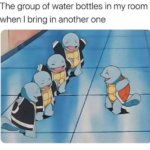
Community - Krumping | YouTube Video
This video depicts a closing credits scene in a popular American sitcom from the 2010s named Community. It is relevant to pragmatic study as it depicts several different pragmatic elements of humor. The first is the term “krumping.” While it is not essential to know what krumping is to find humor in this video, it is greatly intensified when you know that it was a dancing phase from the 2000s. Learners who watch this video will be able to see the importance of relevance and context in humor by knowing or not knowing the word “krumping.” Secondly, there is physical humor in this video, but it is an updated version of physical humor from the style that happened in TV shows like The Three Stooges. In this video, the humor comes from how ridiculous the physical movements are. These components touch on the pragmatics of humor in an American English setting making this video an apt educational snippet.
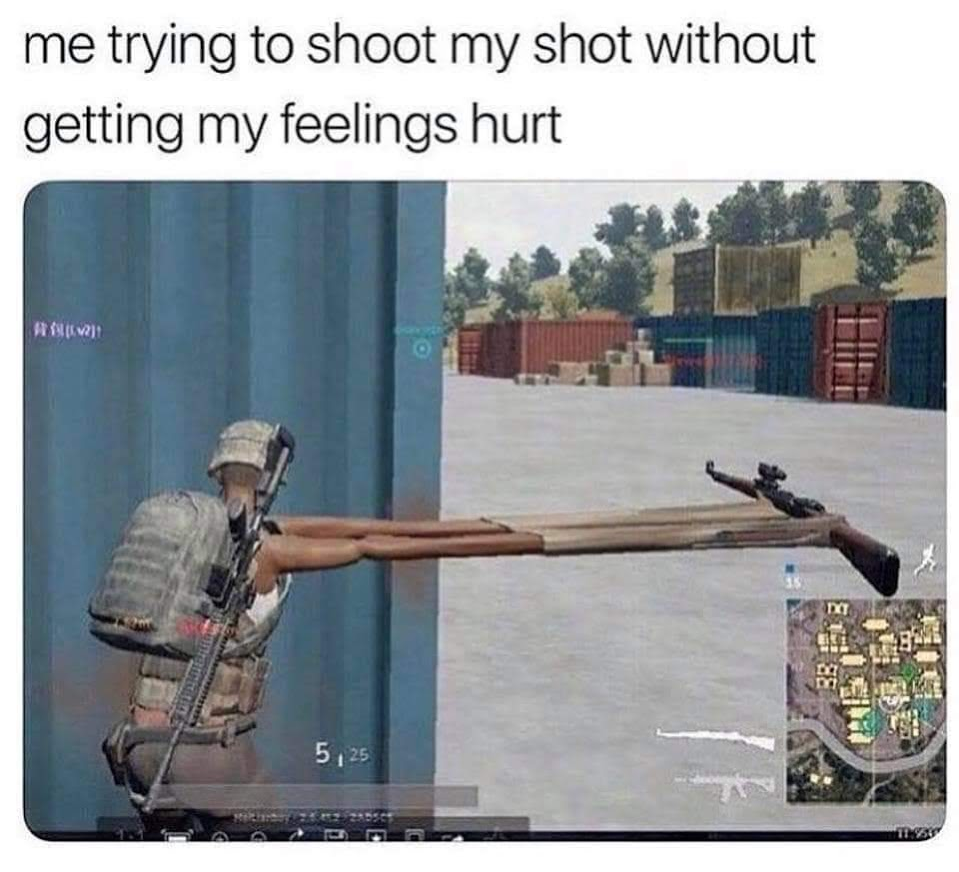
Self degrading/low confidence | Meme

This image is using Photoshop to play with the length of the arms of the soldier so that the gun is way farther than it is possible in real life. This distance represents how some people are too scared to do something directly (like asking somebody out) and want to do it from a safe distance. This would be a good example of what students could make for their assignment of creating humor.

Spicy Noodles | Meme

This picture of a person selling spicy Korean noodles is funny, because it seems that the seller didn’t know the brand of the spicy noodles that are known for making very spicy noodles that have their own rating on the scoville scale. Now the seller needs to get rid of the noodles because it is painful to eat them when he gets drunk. This can be used as a funny example of how context is necessary to avoid getting into problematic situations.
Small Talk in English
PRACTICAL IDEAS AND RESOURCES
Resources in this section curated by: Ellie Collins and Holly Shao
MASTERING SMALL TALK

Tandem: How to Master Small Talk | Blog Post
This website is a great resource that covers appropriate small talk in different contexts. The small talk that is appropriate depends on the context. For example, the topics and conversation starters that you use in an elevator is different from the small talk you would use at a meeting. This website explains different contexts and the topics appropriate for each context. The example sentences are available in text and audio formats, so you can hear them read aloud.

Starting Friendly Conversations | Blog Post
This blog begins by explaining why small talk is important in English and in which contexts small talk would be appropriate. Additionally, this blog comments on the importance of appropriate body language in successful small talk. It then lists seven appropriate topics for small talk in English and in which contexts these topics would be appropriate. The blog provides an overview of each topic as well as examples of how to approach that topic during a conversation.

6 Steps To Master Small Talk | Blog Post
This website is a great resource for second language English learners. It talks about ways you can improve your small talk and also ways that it can be difficult. There's a list of topics given that are great places to start a conversation like hobbies, family, and holidays. It also lists topics to steer away from like money, religion, and intimate relationships.

Small Talk in English | Blog Post
In this short article from EnglishClub.com, the basics of English small-talk are explained and examples are provided. These explanations include the basic “who, what, when, and why” questions that can come up when trying to understand the functions and rules of small-talk in English. Additionally, there are practice scenarios linked at the bottom of the article for L2 English learners to use as reference to test their knowledge.

Ultimate Guide to Small Talk | Blog Post
This website provides a basic guide about being successful with small talk. This particular guide is more business and career oriented. Additionally, it is formatted in a more instructional way, which may make the blog useful to intermediate/advanced learners of English as well as native speakers of English who are hoping to improve their small talk skills. In addition to the basics of small talk, this site provides a list of openers, follow-up questions, as well as strategies for ending a conversation.

How to make GREAT Small Talk | YouTube Video
In this ten-minute video, Emma, a speaker of British English, gives tips and lists appropriate topics that you can cover in small talk conversations. Emma talks through the topics of work, life, travel, food, and weather; she gives examples of questions you can ask in order to start a conversation on one of these topics. If you would like them, this video has captions available in English and 9 other languages. Since it is a video on YouTube, there are some ads, but it is also a free video for you to use and share!

Small Talk: What to say and what NOT to say! | YouTube Video
In this 15 minute video, Emma, a North American English speaker, covers appropriate topics in English small talk, inappropriate topics, and ice-breaking questions. Additionally, she talks about the importance of small talk in English and the contexts in which it is appropriate. Emma speaks clearly and offers opportunities for you to practice as you watch along. This video has closed captioning available in English and three other languages and a transcript available in the video description.

Easy Small Talk Tips in English | YouTube Video
In this 20 minute video, Vanessa covers the basics of understanding and using small talk in English, specifically American English. This video gives tips on initiating small talk appropriately. This video could be useful for intermediate learners who are looking to improve their small talk skills. This video allows learners to slow down the playback speed of the video if they would like the extra support.

The Art of Small Talk | YouTube Video
This video covers some of the most important aspects of small talk:
- Introduce yourself and break the ice.
- Talk less, listen more, get to know other people after asking questions.
- Keep sending positive energy out to the conversation.
This video could be useful to anyone wanting to improve their small talk skills in English.
APPROPRIATE TOPICS

Small Talk Topics: The Best and Worst Things to Talk About | Blog Post
The focus of this resource is specifically ideal and inappropriate small-talk conversation topics in English. Much of the ‘good’ topics have something to do with starting with general topics with the goal of learning more about the person you’re speaking to. The ‘bad’ topics are generally categorized as such due to them being considered inappropriate things to ask or talk to someone about, especially if you don’t know them well. This source would be helpful for someone who isn’t sure what small-talk topics are socially acceptable in a different culture.

152 Great Small Talk Questions (For Every Situation) | Blog Post
This resource provides 140 small-talk questions for a number of different scenarios, such as questions to ask a person you’ve just met and questions that are helpful for starting a conversation. This resource is another that would be very helpful for someone unsure of what sorts of questions or topics to utilize while engaging in small-talk.

Appropriate Topics for Small Talk | YouTube Video
This six-minute video shows how to make conversation with people you have just met or don't know well. Misha and Larissa look at a variety of topics and show you whether they are appropriate for polite conversation or not. Topics covered: weather, sports, religion, politics, appearance, health, family. Watch to find out which are appropriate to bring up with people from Western countries.
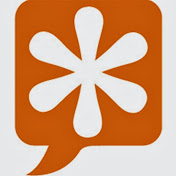
What’s Up? English Small Talk Do’s and Don’ts | YouTube Video
This seven minute video very clearly defines some appropriate and inappropriate topics in American English small talk. This video is geared towards native speakers from outside the US as well as English language learners. The speaker clearly explains which topics are appropriate or inappropriate and provides the reasoning why.

Rules of Small Talk | YouTube Video
In this short, 3 minute video basic rules of English small talk are discussed. Most of the video focuses on appropriate and inappropriate topics to bring up when engaging in small talk. There are five key rules brought up: 1. Ask open questions 2. Give more information 3. Start with a general topic 4. Ask questions in return 5. Sound interested. These five things ensure that you show you're interested in speaking to the other person and that you don't over step by asking or talking about "taboo" topics.
SPECIFIC CONTEXTS

How To Have A Conversation On A Dating App (Hint: It’s Not That Hard) | Blog Post
This blog post from a user named Sarah explores her definition of proper English small-talk in the context of dating apps. Especially nowadays, dating apps are extremely popular and commonly used, and many users choose to interact with each other through the app before meeting in person. This blog post explores the dos and don’ts from the perspective of an English speaking woman who uses dating apps. Examples from her own experience and her friends’ experiences are also included for reference.

How to small talk in an online meeting | Blog Post
This short article created by the website’s team discusses English small-talk in the context of professional online meetings. This source would be especially helpful for an L2 English learner or speaker nowadays, as many meetings and work take place online due to the pandemic. The writers include examples and videos to aid in explaining the ins and outs of online meeting small-talk.

Make Time for Small Talk in Your Virtual Meetings | Blog Post
This article in the Harvard Business Review discusses the importance of small talk during business meetings over zoom or other video conferencing software. This resource could be useful for advanced learners of English who want to grow and maintain connections in the business and corporate world. It outlines why small talk is important even in virtual meeting spaces to maintain rapport and reduce some levels of "Zoom fatigue." The authors go on to discuss several ways to continue to make space for small talk in an online meeting.
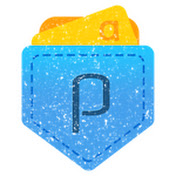
Small Talk: Making Small Talk | YouTube Video
This short video shows a cartoon version of a casual conversation between two strangers. It starts out with a safe topic, talking about the weather and moves into them introducing themselves to each other. This is a great resource for learners who are relatively new to the language and would like to see small talk in action. Through out the video the two speakers go more in depth with their topics but still stay on safe subjects.

How to Make Small Talk: Making Small Talk with Strangers | YouTube Video
This short video focuses on making small talk with a stranger in a professional way. In this example we have two adults waiting for a bus and the common topic that is brought up between them is that they are both in town for a conference. All of the dialogue is professional and focuses on their jobs. This video example is a perfect resource for people who are beginners and want to know how to conduct themselves around strangers in a public setting.

5 Virtual Ice Breaker Activities | YouTube Video
How to encourage students for activities over the Zoom class.
- Post questions
- Send students to the different breakout rooms for 90 seconds each time
- Switch different group of students to the different breakout rooms quickly to avoid the awkward moment
- "Have you ever...?" questions
HUMOR IN SMALL TALK

How to Never Run Out of Things to Say in Conversation | YouTube Video
In this eleven minute video, the narrator uses Joe Rogan’s podcast show as an example to analyze how to make small talk with anyone and why. Joe Rogan is an American comedian and podcast host, the narrator breaks Joe’s small talk strategy down into five steps, and explains why Joe does it and how it works on people.

Memorable Monologue: Small Talk | YouTube Video
In this four-minute video, Ellen tells a story about the incredibly boring small talk between her and a woman at an event. The small talk was around the weather, job, and the traffic which are the topics that can cause an awkward vibe but people still do in our daily life. Furthermore, she gives some recommendations on small talk topics.

Ismael Loutfi: “Arab-to-Arab Small Talk Gets Dark Fast” | YouTube Video
In this four minutes stand-up comedy video clip, Ismael Loutfi, an Arab American comedian talks about what happens when the two Arabs having small talks on Uber carpool. Additionally, he points out the Chinese passenger's reaction to the small talk. Ismael also explains why people shouldn't google for questions about Islamic culture. Lastly, Ismael wonders why people are so critical of Florida. This video clip shows that so much information can fit in small talks.
FOR TEACHERS

Small Talk: The Do's and Dont's | YouTube Video
In this 15 minute lecture-style video, Emma, a North American English speaker, covers appropriate topics in English small talk, inappropriate topics, and ice-breaking questions. Additionally, she talks about the importance of small talk in English and the contexts in which it is appropriate. This could be a helpful resource to supplement a small-talk lesson or to provide support to students who want to dive deeper into the topic of small talk. This video has closed captioning available in English and three other languages which could further support English language learners.

Small Talk Examples | YouTube Videos
Below are videos of small talk in English that demonstrate both successful and unsuccessful instances of Small Talk. English language learners can watch these to see examples of English small talk in a variety of contexts. Additionally, teachers can use these in their classroom for both observation, analysis, and other activities for language learners. The clips listed here are from various American TV shows, comedy shorts, short films, and educational videos.
Activities

Small Talk Lesson Plan | Lesson Plan
This lesson plan created by Kenneth Beare gives an outline of how to teach English language learners the basics principles of English small talk. This plan is designed with intermediate to advanced learners in mind. It includes several activities that teachers could incorporate into their classroom in order to help students become more comfortable with small talk in English. Additionally, this lesson plan provides a list of grammatical forms that can be taught alongside this small talk lesson.

Socializing and Small Talk for English Language Learners | Materials
This website contains a collection of materials surrounding English small talk that teachers can implement in their own classrooms. The lessons include exercises and visuals that can help students learn the basics of English small talk. They also cover a variety of topics that are connected to small talk including examples of dialogue, cultural differences, and grammar points like phrasal verbs and interjections. Additionally, there are worksheets, quizzes, and handouts available for download that teachers can use to supplement their own lesson plans.
ACADEMIC RESOURCES ON HUMOR IN ENGLISH
Resources in this section curated by: Carla Consolini, Tigre Lusardi, Lorelei Pfeffer, Johanna Lyon, Cathy Lee, Tung Tuaynak, Jermayne Tuckta, and Ken Ezaki Ronquillo
Attardo, Salvatore. (2003). Introduction: the pragmatics of humor. Journal of Pragmatics, 35, 1287-1294.
This article provides a foundation for understanding how pragmatics function within humor. It explains how jokes are set-up in terms of phonological, syntactic, and morphological construction and directs readers to other salient literature on the topic. It then goes on to discuss how laughter pragmatically works within humor. Not only is it present in people who experience something humorous or a joke, but it is also present in someone telling a joke often before they complete what they are saying. These non-verbal indicators of humor are key to pragmatically understanding how humor works.
This article is critical for a beginning understanding of the pragmatics of humor. While other articles delve into specific studies or attributes of pragmatics in humor, this article sets a clear foundation and easy entry-point for teachers who are unfamiliar with the topic and are not clear where to start. Therefore, it informs how to begin with pragmatics when it is an unfamiliar topic.
Davies, C. E. (2003). How English-learners joke with native speakers: An interactional sociolinguistic perspective on humor as collaborative discourse across cultures. Journal of pragmatics, 35(9), 1361-1385. https://doi.org/10.1016/S0378-2166(02)00181-9
In this study the author analyzed data taken from three peer conversation groups in an intensive English language program. Each group included five second language (L2) English learners and one first language (L1) English speaker. Learners were tasked with discussing their progress in learning English, specifically focusing on any humorous or misunderstood moments that occured when they first entered the program. Results showed that humorous utterances are a co-constructed speech act requiring use of learners’ sociolinguistic resources. Learners first rely on nonverbal and lexical resources when constructing humorous utterances, and interaction with L1 speakers can provide learners with support in scaffolding, prompting and helping to encourage or direct the verbal use of humor.
Hidalgo-Downing, L., Hidalgo-Downing, R., & Downing, A. (2014). Strategies of (in)directness in Spanish speakers’ production of complaints and disagreements in English and Spanish, in A. Gomez Gonzalez, F. Mendoza Ibanes, F. Gonzalvez-Garcia, and A. Downing (Eds.), The Functional Perspective on Language and Discourse: Applications and implications.
This was a study into how students from a Spanish university use their strategies on how to be indirect when expressing complaints, disapproval and disagreements, both in English and Spanish, though the use of role play to elicit these use of indirectness. Results show that different strategies were used when speaking Spanish or English, showing that students adapt their strategies depending on their understanding of the culture (English vs Spanish) they were participating in.
Laineste, L., & Voolaid, P. (2016). Laughing across borders: Intertextuality of internet memes. European Journal of Humor Research, 4(4), 26-49. https://www.ceeol.com/search/article-detail?id=972141
In this article the authors reviewed memes from websites that collect popular ones among Estonian users. The goal of this analysis was to investigate the intertextuality of viral and comedic internet content that is flexible enough to be transformed from culture to culture. What the authors highlight is how humor can help create a hybrid intertextuality between the cultural references (in this case of the Estonian-speaking community) and a global community on the internet (mainly English-speaking).
Widiana, Y. (2014). A Pragmatics Study on Jokes and the Implicature in Broadcast Messages. International Journal of Social, Behavioral, Educational, Economic, Business and Industrial Engineering, 8(9).
The research in this article investigates how implicature functions within humor on social media platforms. It looked at two popular platforms and the type of jokes that contained prior knowledge or implicature that occurred on the platform. The study found that implicature occurred in two forms: conversational and conventional. Conventional implicature makes implications based on common knowledge from a speech community while conversational implicature requires contextual knowledge and may not function in another setting.
This article pertains closely to our project in that jokes depend closely upon co-constructed knowledge within a speech community and therefore upon implicature. Many of the jokes and humor we have curated depend upon implications and shared knowledge. Without the implications, whether generated culturally, pragmatically, or linguistically, the humor would be absent and the jokes would not be able to function. Therefore, implicature is a key pragmatic component to humor.
Yus, F. (2008). A Relevance-Theoretic Classification of Jokes. Lodz Papers in Pragmatics, 4(1), 131-157.
This has a theoretical basis in relevance theory which hypothesizes that humans are evolutionarily conditioned to pay attention and process information that is potentially relevant and dismiss information that seems irrelevant. Relevance theory suggests that humor is often dependent upon assumed interpretations of content from the listener or anticipations that may or may not come to fruition. Much of humor is derived from moments where the explicit interpretations are questioned and therefore our schemas are questioned. This study goes on to provide innumerous types of jokes dependent on different pragmatic interactions.
This research is pertinent to our project in how it details the different pragmatic forms across types of jokes. While there are similarities across a broad array of humor in English, the specificity offered by this article provides a greater degree of analysis for our curated content. This article will allow us to look in depth at each joke and categorize it to different pragmatic techniques around humor, thus making our analysis deeper and more meaningful.
